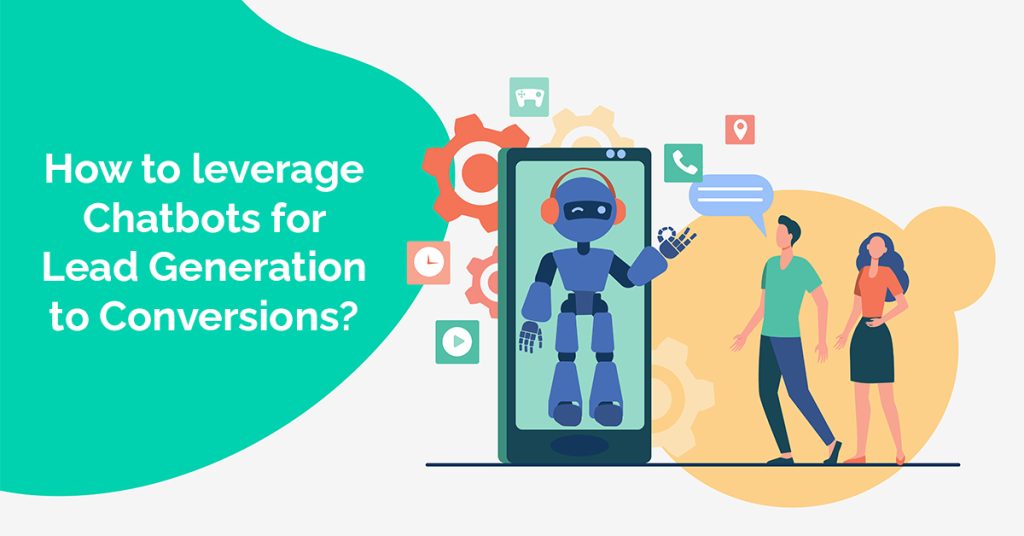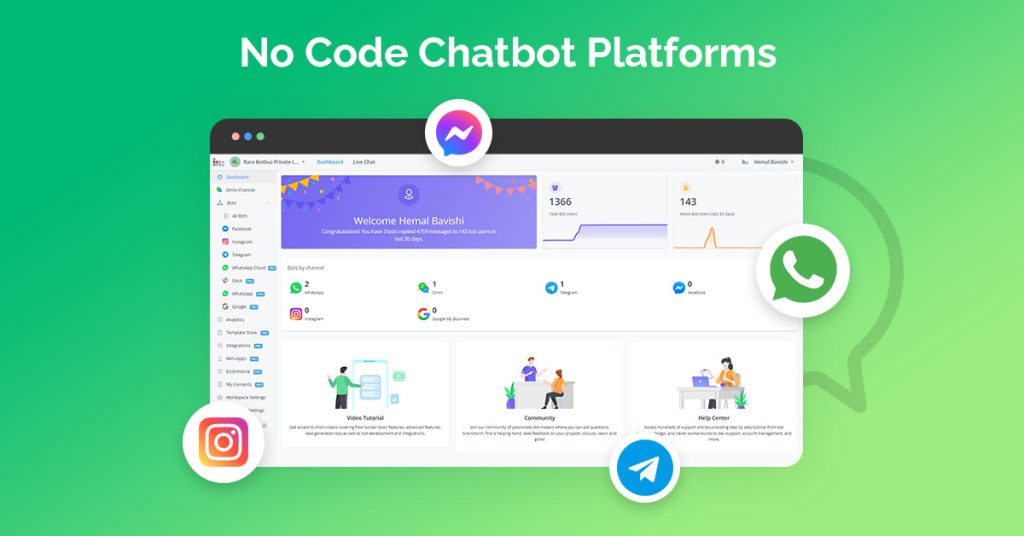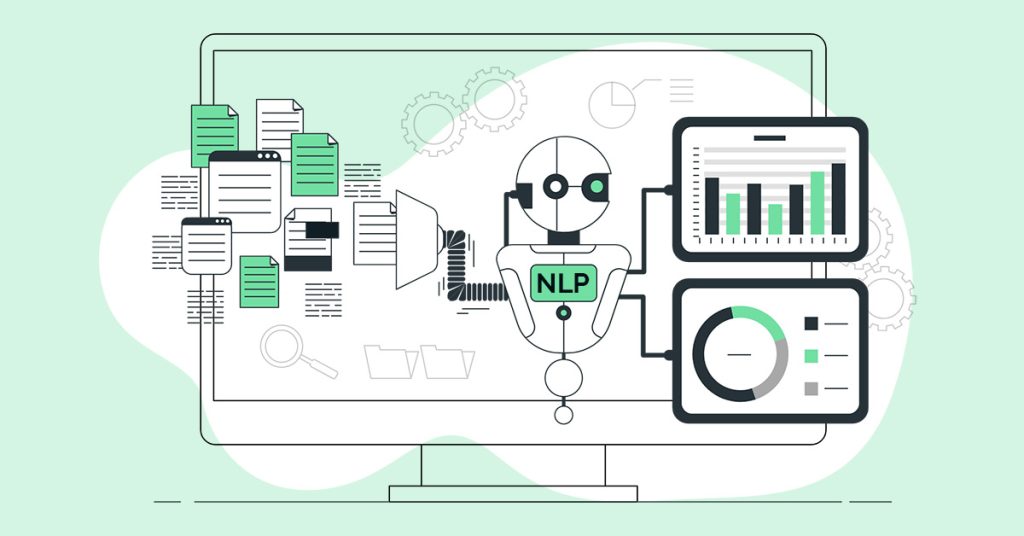- The Changing Landscape Of Lead Generation:
- The Role Of Chatbots and CRM In Modern Marketing:
- Unbderstanding Lead Generation:
- The Power Of Chatbots In Lead Generation:
- Utilizing CRM Systems For Lead Management:
- Combining Forces : Chatbots and CRM for Lead Generation:
- Nurturing Leads with Automated Workflows:
- Personalization and Engagement Strategies:
- Converting Leads to Customers:
- Botbuz Chatbot for Converting Leads into Cusotmers:
- Key Takeaway:
The Changing Landscape of Lead Generation:
The landscape of lead generation is constantly changing. In the past, businesses relied on traditional methods. The traditional methods like cold calling & email marketing to generate leads. However, these methods are becoming less effective. Consumers have become more savvy & avoid intrusive sales tactics.
Today, businesses need to adopt new & innovative approaches to lead generation. Chatbots & CRM systems are two powerful tools. They can be used together to generate & convert leads.
The way consumers interact with businesses has changed dramatically in recent years. Consumers are now more likely to research products & services online before purchasing. They are more likely to interact with business through social media & other digital channels.
This shift in consumer behavior has created a new challenge for businesses. The challenge is how to generate leads in a way that is effective and non-intrusive.
The Role of Chatbots and CRM in Modern Marketing:
Chatbots and CRM systems can play a vital role in lead generation and conversion in today’s digital world. Chatbots can be used to engage with website visitors and collect their contact information. They can also be used to qualify leads by asking them questions about their needs and interests. This information can then be used to nurture leads through the sales funnel and convert them into customers.
CRM systems can be used to store and manage lead information. They can also be used to automate the lead nurturing process by sending leads personalized email messages and inviting them to attend webinars or events.
Understanding Lead Generation:
Lead generation is the process of identifying and attracting potential customers. In the digital age, lead generation can be done through a variety of channels. Lead can be generated through online advertising, social media & content marketing.
High-quality leads are those that are most likely to convert into customers. They are potential customers who have expressed an interest in product or service. Those customers have the budget & authority to make a purchase.
Chatbots are computer programs that can simulate conversation with humans. They are becoming increasingly popular in business, as they can be used to automate a variety of tasks, including lead generation and conversion.
Chatbots can be used to generate leads in a number of ways. For example, they can be used to greet visitors to your website and offer assistance, or they can be used to collect contact information from leads. Chatbots can also be used to qualify leads by asking them questions about their needs and interests.
What Are Chatbots and How Do They Work?
Chatbots are typically rule-based, meaning that they follow a set of rules to generate responses to user queries. However, some chatbots are also powered by artificial intelligence (AI), which allows them to learn from their interactions with users and generate more natural and engaging responses.
Why Are Chatbots Ideal for Initial Lead Capture?
Chatbots are ideal for initial lead capture because they can be used to engage with website visitors and collect their contact information 24/7. Chatbots can also be used to qualify leads and personalize the user experience.
Personalizing the User Experience with Chatbots:
Chatbots can personalize the user experience by using the information they have collected. Information such as their name, email address, and interests. For example, a chatbot could greet a lead by name. It also helps to offer them personalized recommendations for products or services.
Utilizing CRM Systems for Lead Management:
CRM is a software solution that helps businesses manage their customer interactions & relationships. CRM systems can track customer interactions across all channels. It can track via email, phone, social media & face-to-face meetings. This information can help to improve the customer experience & increase sales. It also helps to boost customer satisfaction.
The Benefits of Using CRM for Lead Management
CRM systems can be a valuable tool for lead management in a number of ways:
- Centralized data storage: CRM systems provide a centralized location to store all of your lead data. This makes it easy to track leads through the sales funnel and manage your sales pipeline.
- Lead qualification: CRM systems can help you to qualify leads by scoring them based on their interests, demographics, and other factors. This allows you to focus your sales efforts on the leads that are most likely to convert into customers.
- Lead nurturing: CRM systems can be used to automate the lead nurturing process. For example, you can use CRM to send leads personalized email messages or invite them to attend webinars or events.
- Sales forecasting: CRM systems can help you to forecast your sales by tracking the progress of your leads through the sales funnel. This information can be used to make better decisions about your sales and marketing efforts.
Integrating CRM with Your Sales and Marketing Strategies
To get the most out of your CRM system, it is important to integrate it with your sales and marketing strategies. This means using your CRM system to track all of your lead interactions and customer relationships, regardless of which channel they occur on.
Combining Forces: Chatbots and CRM for Lead Generation:
Chatbots and CRM systems are two powerful tools that can be used together to generate more leads and convert them into customers. Chatbots can be used to engage with website visitors, collect their contact information, and qualify them as leads. This information can then be populated into the CRM system, where it can be used to nurture leads and move them closer to making a purchase.
Synergies Between Chatbots and CRM Systems:
Chatbots and CRM systems work well together because they are complementary technologies. Chatbots are good at engaging with people & collecting information. While CRM systems are good at managing & tracking leads. By combining the strengths of these two technologies, businesses can create a more efficient & effective lead generation & conversion process.
How Chatbots Qualify Leads and Populate CRM?
Chatbots can be used to qualify leads by asking them questions about their needs, interests, and budget. This information can then be used to segment leads and send them targeted marketing messages. Chatbots can also be used to collect contact information from leads, such as their name, email address, and phone number. This information can then be populated into the CRM system, where it can be used to nurture leads and move them closer to making a purchase.
Ensuring Data Quality and Accuracy in CRM:
It is important to ensure that the data collected by chatbots is accurate and complete. This can be done by using a variety of techniques, such as data validation and quality checks. It is also important to keep the CRM system up-to-date with the latest information about leads and customers.
Nurturing Leads with Automated Workflows:
The Role of Automated Workflows in Lead Nurturing
Automated workflows are a powerful way to nurture leads & move them through the sales funnel. Chatbots can trigger automated workflows based on a variety of factors. Like lead’s website activity, their answers to chatbot questions, or their lead score.
For example, you could create an automated workflow that sends a lead a series of personalized emails based on the products they viewed on your website. Or, you could create an automated workflow that sends a lead a demo invitation if they answer a chatbot question indicating that they are interested in learning more about your product.
Customizing Chatbot and CRM Workflows
When customizing chatbot and CRM workflows, it is important to keep your target audience in mind. What are their needs and interests? What kind of content and messaging would be most relevant to them?
You should also consider the stage of the sales funnel that each lead is in. Leads in the early stages of the sales funnel may need more educational content, while leads in the later stages of the sales funnel may be ready for a demo or sales call.
Lead Scoring and Prioritization for Effective Follow-Up
Lead scoring is a process of assigning a value to each lead based on their likelihood of converting into a customer. Chatbots can be used to collect information from leads that can be used to score them, such as their company size, job title, and website activity.
Once leads have been scored, you can use this information to prioritize your follow-up efforts. For example, you may want to focus on following up with leads that have a high lead score and have shown interest in your product.
Personalization and Engagement Strategies:
Chatbots and CRM systems can be used together to create a personalized and engaging experience for leads and customers. By tailoring conversations based on CRM data and using CRM insights for targeted messaging, chatbots can enhance customer engagement and help businesses to convert more leads into customers.
Tailoring Conversations Based on CRM Data
Chatbots can be used to collect information from leads and customers, such as their name, email address, interests, and purchase history. This information can then be used to tailor conversations and make them more relevant to the individual.
For example, a chatbot could greet a lead by name and ask them about their specific needs. Or, a chatbot could recommend products to a customer based on their purchase history.
Using CRM Insights for Targeted Messaging
CRM systems can provide valuable insights into lead and customer behavior. This information helps to create targeted messaging campaigns which convert leads into customers.
For example, a business could use CRM insights to segment leads based on their interests. It also helps to send them targeted email messages. Or, a business could use CRM insights to create chatbots that are specific to different customer segments.
Enhancing Customer Engagement Through Chatbots
Chatbots can be used to enhance customer engagement in a number of ways. For example, chatbots can be used to:
- Answer customer questions.
- Provide customer support.
- Offer product recommendations.
- Book appointments or demos.
- Collect customer feedback.
By providing customers with a convenient and easy way to interact with the business, chatbots can help to improve customer satisfaction and loyalty.
Converting Leads to Customers:
Once you have generated leads, the next step is to convert them into customers. This can be done by nurturing leads through the sales funnel and providing them with valuable information about your products or services. Chatbots and CRMs can be used together to strengthen this process.
The Transition from Lead to Prospect
When a lead interacts with your chatbot, it is important to quickly transition them from a lead to a prospect. This can be done by asking them questions about their needs and interests, and by qualifying them based on your sales criteria.
Once a lead has been qualified, they should be added to your CRM system. This will allow you to track their progress through the sales funnel and send them targeted marketing messages.
Leveraging CRM Data for Personalized Sales Pitches
Your CRM system contains a wealth of information about your leads and prospects. This information can be used to personalize your sales pitches and make them more relevant to each individual lead.
For example, you can use your CRM data to learn about a prospect’s company size, industry, and budget. You can then use this information to tailor your sales pitch to their specific needs.
Tracking Conversion Rates and ROI
It is important to track your conversion rates and ROI to measure the effectiveness of your lead generation and conversion efforts. You can use your CRM system to track the progress of your leads and prospects through the sales funnel. You can also use this information to calculate your conversion rates and ROI.
By tracking your conversion rates and ROI, you can identify which lead generation and conversion strategies are working best. You can then adjust your strategies accordingly.
Botbuz chatbot for Converting Leads into Customers:
Botbuz chatbots can play a significant role in lead generation by:
- Engaging with website visitors: Botbuz chatbots can greet visitors to your website and offer to answer their questions. This is a great way to start a conversation with potential leads and learn more about their needs.
- Qualifying leads: Botbuz chatbots can qualify leads by asking them questions about their needs, interests, and budget. This information can then be used to segment leads and send them targeted marketing messages.
- Collecting contact information: Botbuz chatbots can collect contact information from leads, such as their name, email address, and phone number. This information can then be used to nurture leads through the sales funnel and convert them into customers.
- Booking appointments or demos: Botbuz chatbots can be used to book appointments or demos for leads. This can help to move leads closer to making a purchase.
Key Takeaway:
Lead generation is the process of identifying and attracting potential customers. It is an essential part of any business. It helps to ensure a steady pipeline of new leads to nurture and convert into customers.
Chatbots and CRMs can play a significant role in lead generation. Chatbots can engage with website visitors, qualify leads, collect contact information. It also helps to book appointments or demos. CRMs can help to manage and nurture leads, and track progress through the sales funnel.
By using chatbots & CRMs together, businesses can create efficient & effective lead generation processes. Chatbots can automate many of the time-consuming tasks involved in lead generation. Thus, freeing up the sales team to focus on more complex tasks, such as closing deals.




